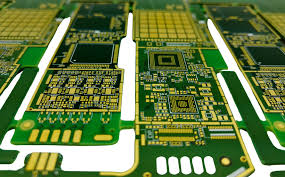Defining the Breadboard
A breadboard is a vital tool to have if you are working with electronics, especially when prototyping and testing PCB (printed circuit board) designs. A breadboard is a little box that contains a set of metal connectors, and used to build electronics without soldering the parts. Variations of barcode created by AdrianHillman Breadboards are an array of connected holes where you can insert components (resistors, transistors, ICs) and connect them with jumper wires.
Enabling Quick Prototyping & Testing
Accelerating the design_IMPLEMENTATION process
The main advantage of a breadboard is that it allows the user to design and test circuits quickly. We can gather electrical components much faster using a breadboard than if we were going to solder the entire circuit. This speed means that quick changes and iterations can be made, which is invaluable after experimentation in PCB design has started. Compared with traditional soldering methods, breadboards can shorten the period of initial testing by as much as 50% for an engineer.

Error Reduction and Cost Avoidance
PCB layout for a breadboard allows engineers to spot and fix circuit design errors before moving a permanent PCB layout. This identification at the earliest stage can reduce great load off the prices of PCB manufacturing. Errors that are caught during the breadboarding phase can save hundreds to thousands of dollars depending on the complexity and scale of the project.
Experiment, and Educate
More than a prototyping tool, it is a great way to learn electronics! This lets students and beginners tinker with circuit designs safely, without concern about breaking any parts or wasting money. The value of this practical side of learning how the principles of electrical engineering and circuit design work is immeasurable.
Choosing the Right Breadboard
Choosing the right Breadboard: while choosing a breadboard for your application, you must ponder on some aspects like · size · material and · no of Tie points For the vast majority of hobbyist projects and educational purposes, a normal-sized breadboard of around 830 tie points is more than sufficient. For bigger projects, multiple breadboards with more extensive configurations.
Practical tools for PCB designers
In other words, breadboards provide PCB designers with an inexpensive, flexible and forgiving platform to create and test their electronics circuits. Fast assembling and prototyping without any irreversible consequences provides a much more creative and effective view on PCB design.
Read this comprehensive comparison on breadboard and get to know how breadboards and PCBs compete with each other and have their unique benefits. This resource provides information that enables novices, and more adept, builders to make educated choices concerning the tools they use in their electronics projects.
